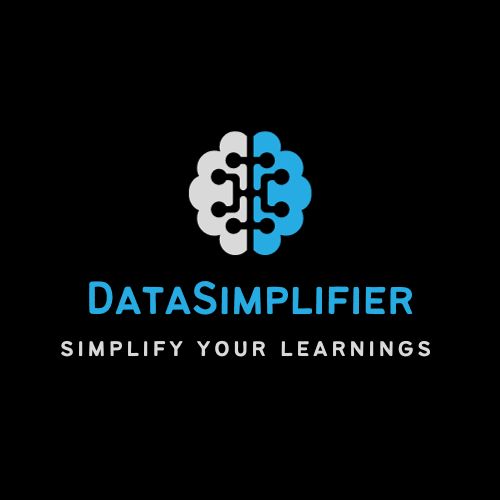Open Source Data Visualization Tools have revolutionized the way we interact with data, providing intuitive and powerful solutions for transforming complex information into compelling visuals. In today’s data-driven world, the ability to effectively communicate insights and trends from data is paramount. Data visualization plays a crucial role in this process, as it transforms complex data into understandable visuals. While there are many commercial data visualization tools available, open source data visualization tools have gained popularity for their flexibility, cost-effectiveness, and vibrant user communities. In this blog post, we’ll explore the world of open source data visualization tools, their features, and why they are worth considering for your data visualization needs.
The Rise of Open Source Data Visualization Tools
There is an huge demand of Open Source Data Visualization Tools in recent years with the increase in data volume. Data visualization tools, once dominated by proprietary solutions, have evolved to offer open source alternatives that are equally powerful and user-friendly. The reasons behind this increasing demand are obvious:
1. Cost-Effectiveness: Open source tools are typically free to use, making them an attractive option for individuals, small businesses, and organizations with budget constraints.
2. Community Support: Open source projects are often maintained and improved by a community of passionate developers and users. This results in a faster rate of innovation and ongoing support.
3. Flexibility and Customization: Open source tools are highly customizable, allowing users to adapt and extend the software to meet their specific needs.
4. Transparency: Open source tools are open for scrutiny, ensuring transparency and trust in the software’s security and functionality.
Top 7 Open Source Data Visualization Tools
1. Matplotlib: Matplotlib is a Python library that is widely used for creating static, animated, and interactive plots. It provides a high level of customization and is an excellent choice for those already familiar with Python.

2. Seaborn: Built on top of Matplotlib library, Seaborn is another Python library that offers a high-level interface for creating informative and attractive statistical graphics. It simplifies the process of creating aesthetically pleasing visualizations.
3. D3.js: D3.js, short for Data-Driven Documents, is a JavaScript library that allows you to bring data to life through interactive and dynamic visualizations. It’s especially well-suited for web-based applications.
4. Plotly: Plotly is a versatile graphing library that supports several programming languages, including Python, R, and JavaScript. It offers interactive and shareable plots and dashboards.
5. Grafana: Grafana is an open source platform for monitoring and observability, which includes robust data visualization capabilities. It’s particularly popular for time series data and monitoring applications.
6. Superset: Apache Superset is a data exploration and visualization web application that simplifies the process of creating charts and dashboards. It supports a variety of data sources.
7. RawGraphs: RawGraphs is a free and open source data visualization tool. It allows users to create custom visualizations from their data, making it a valuable resource for data professionals and enthusiasts.
Which Data Visualization Tool is Open-Source?
Several open source data visualization tools shared above are available, including Matplotlib, Seaborn, D3.js, Plotly, Grafana, RawGraphs and Superset. These tools are open source, meaning they can be freely accessed by users and have active developer communities.
Which Tool is Best for Data Visualization?
The best data visualization tool depends on your specific needs and preferences. Factors to consider include the type of data you are working with, your programming language proficiency, the level of interactivity required, and the availability of community support. Each of the mentioned tools has its strengths, making it suitable for different scenarios. If you don’t want to code for building compelling visuals, you can also utilize low-code tools like Tableau or Power BI to build interactive charts and graphs.
Here is a quick comparison between open source data visualization tools with paid tools :
| Feature | Open Source Tools | Paid Tools |
|---|---|---|
| Cost | Free to use with no license cost | Requires a subscription charge or one-time cost |
| Flexibility | Highly customizable with source code accessible | Customization options may be very limited |
| Community and Support | Active communities, forums, and documentation for support | Official customer support but limited community support |
| Features and Capabilities | Feature availability varies with the specific tool | Comprehensive features and extensive libraries |
| Security | Transparent and open to scrutiny | Closed-source, may have less transparent security |
| Learning Curve | Learning curve can be steep for some tools | Typically more user-friendly interface, ideal for beginners |
What Are Two Top Visualization Tools?
Two top open source data visualization tools are Matplotlib and D3.js. Matplotlib, a Python library, is known for its flexibility and ease of use. D3.js, a JavaScript library, excels in creating interactive and dynamic visualizations, making it ideal for web-based applications. These tools are widely used by data scientists and visualization experts. For those of you who need interactive visuals, they can try Plotly & Seaborn as ell but it need good coding knowlege for creating compelling visuals.
Conclusion
Open source data visualization tools have democratized the field of data visualization, making it accessible to a wider range of users. Whether you’re an individual looking to create eye-catching charts or an organization seeking to develop interactive dashboards, open source tools offer powerful solutions.
By exploring the various open source data visualization tools available and understanding your specific needs, you can harness the power of data visualization to tell compelling stories with your data. The world of open source data visualization is diverse and vibrant, and there’s no shortage of tools to explore and leverage in your data-driven endeavors.
If you are a data analyst, then you can also try enhancing you skills like SQL, Python, Alteryx, Power BI & Tableau through portfolio projects. We have shared some amazing projects for data analysts in this post.
Hope it helps 🙂
Share the post with your friends

